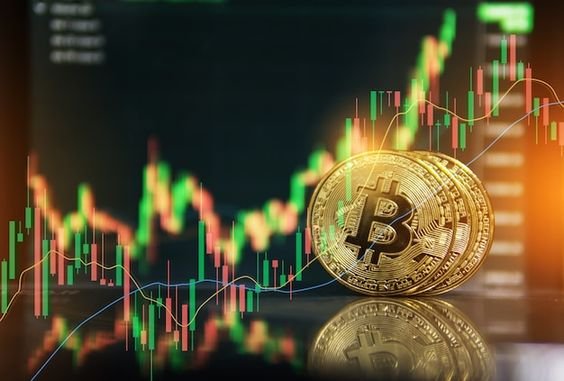The Bitcoin Halving is a pivotal event in the world of cryptocurrency, occurring approximately every four years and serving as a mechanism to regulate the supply of Bitcoin. This pre-programmed event, designed into the very fabric of Bitcoin’s protocol by its mysterious creator, Satoshi Nakamoto, halves the reward given to miners for verifying transactions and adding them to the blockchain. Initially set at 50 BTC per block, the first halving in 2012 reduced the reward to 25 BTC, followed by subsequent halvings in 2016 and 2020, which further reduced the reward to 12.5 BTC and 6.25 BTC per block, respectively.
The significance of the Bitcoin Halving lies in its role in maintaining the scarcity of Bitcoin. By reducing the rate at which new coins are generated, the halving ensures that the total supply of Bitcoin gradually approaches its maximum cap of 21 million coins. This scarcity is a fundamental aspect of Bitcoin’s value proposition, as it distinguishes the cryptocurrency from fiat currencies, which can be subject to inflationary pressures from central banks.
Furthermore, the anticipation and occurrence of the Bitcoin Halving often coincide with periods of heightened market activity and speculation. Historically, the halving events have been associated with significant increases in the price of Bitcoin, as the reduction in supply combined with sustained or increasing demand leads to a supply-demand imbalance favoring price appreciation.
Nov 28th, 2012
The first halving, which occurred on November 28th, 2012, was a significant milestone in Bitcoin’s history.
Before the halving, miners were rewarded with 50 Bitcoins for each block they successfully mined. However, after the halving, this reward was cut in half to 25 Bitcoins per block. This reduction in block rewards is designed to control inflation and ensure that the total supply of Bitcoin remains capped at 21 million coins.
Leading up to the first halving, there was considerable anticipation and speculation within the Bitcoin community about its potential effects. Many were unsure of how the market would react, and some feared that less profitable miners might shut down their operations due to reduced rewards, leading to a decrease in network security.
However, contrary to these concerns, the aftermath of the first halving was marked by a bullish trend for Bitcoin. Despite a modest closing price of $12.20 on the halving day, Bitcoin experienced a significant surge in value in the following months. By early 2013, Bitcoin’s price began to climb steadily, eventually reaching over $1,000 by the end of the year.
This unexpected surge in price served as a validation of sorts for the Bitcoin community, affirming the positive impact that halving events can have on both the network and the price of Bitcoin. It demonstrated that the reduction in mining rewards didn’t necessarily lead to a decline in miner participation or network security. Instead, it highlighted the scarcity of Bitcoin and its increasing demand as a digital asset.
The first halving thus laid the groundwork for subsequent halving events, establishing a pattern where each halving is accompanied by a surge in Bitcoin’s price. This pattern has become ingrained in the collective consciousness of the cryptocurrency community, shaping expectations and investment strategies around future halving events.
July 9th, 2016
The second Bitcoin halving, which took place on July 9th, 2016, was eagerly anticipated by the cryptocurrency community. Building upon the lessons learned from the first halving in 2012, this event further reduced the block reward from 25 to 12.5 BTC. The halving occurred against the backdrop of a growing interest in Bitcoin and blockchain technology, with the memory of the significant price surge following the first halving still fresh in the minds of many investors and enthusiasts.
Leading up to the 2016 halving, there was widespread speculation and anticipation about its potential impact on Bitcoin’s price and the broader cryptocurrency ecosystem. Some expressed concerns about the potential negative effects on mining profitability, as the halving would effectively reduce the rewards earned by miners for validating transactions and securing the network. There were also discussions about the potential implications for the overall health and security of the Bitcoin network, particularly if less efficient miners were forced to shut down their operations due to reduced profitability.
Despite these concerns, the prevailing sentiment surrounding the 2016 halving was overwhelmingly bullish. Many in the community viewed the event as a positive development that would further underscore Bitcoin’s scarcity and increase its value proposition as a digital store of value. This optimism was fueled by the belief that the halving would lead to a supply shock, driving up demand for Bitcoin and ultimately pushing its price higher.
The years following the 2016 halving validated this optimism, as Bitcoin embarked on an unprecedented bull run in 2017. The cryptocurrency’s price surged to nearly $20,000 by the end of the year, capturing the attention of mainstream media outlets and investors worldwide. This period marked Bitcoin’s emergence into the global spotlight, as it garnered widespread attention and adoption beyond its core community of early adopters and enthusiasts.
The 2017 bull run not only propelled Bitcoin to new all-time highs but also paved the way for future price surges and heightened institutional interest in the cryptocurrency. It demonstrated the resilience and staying power of Bitcoin as a decentralized digital asset, further solidifying its position as a viable alternative to traditional forms of money and investment.
May 11th, 2020
The third Bitcoin halving, which occurred on May 11th, 2020, marked another significant milestone in the cryptocurrency’s journey. This halving event further reduced the mining reward to 6.25 BTC per block, cutting it in half from the previous reward of 12.5 BTC. As with previous halvings, anticipation and speculation surrounding the event were high, but this time there were additional factors at play.
Leading up to the 2020 halving, there was growing speculation regarding institutional adoption of Bitcoin and its potential role as a hedge against inflation. This sentiment was fueled by increasing economic uncertainty and central bank stimulus measures in response to the COVID-19 pandemic. Many investors viewed Bitcoin as a scarce digital asset immune to the inflationary pressures facing traditional fiat currencies.
The anticipation surrounding the 2020 halving was also heightened by the lessons learned from the previous halving events in 2012 and 2016. The Bitcoin community was well aware of the potential for a post-halving price surge, and many investors were prepared for the anticipated bull run.
Following the halving, Bitcoin once again witnessed a surge in price, reflecting the positive sentiment and anticipation within the community. However, it wasn’t until 2021 that the full extent of Bitcoin’s rally was realized. Throughout 2021, Bitcoin’s price skyrocketed, reaching new all-time highs and attracting renewed interest from both retail and institutional investors.
The 2020 halving reaffirmed the significance of halving events in driving market sentiment and investor confidence in Bitcoin. It demonstrated the resilience of the cryptocurrency and its ability to weather economic uncertainties and market fluctuations. Furthermore, it underscored Bitcoin’s role as a store of value and a hedge against inflation, particularly in times of economic turmoil.
Apr 20th, 2024
The latest Bitcoin halving, which took place on April 20th, 2024, marked another significant milestone in the cryptocurrency’s history. This halving event, which occurs roughly every four years, saw the mining reward for Bitcoin miners reduced by 50%, effectively cutting the new production of Bitcoin in half once again.
Following the highly anticipated halving event, the price of Bitcoin held steady at around $63,907. This stability in price immediately after the halving indicated that the event had been largely anticipated and priced into the market. Despite being down from the all-time high of about $73,750 reached the previous month, Bitcoin’s price remained significantly higher than its value from a year ago, showcasing the continued growth and resilience of the cryptocurrency.
One major factor contributing to Bitcoin’s recent rally is the success of spot Bitcoin ETFs, which were approved by U.S. regulators in January of the same year. According to a research report from crypto fund manager Bitwise, spot ETFs saw significant inflows of $12.1 billion during the first quarter of 2024. This influx of institutional investment, coupled with the supply shock resulting from the halving, has contributed to the bullish sentiment surrounding Bitcoin’s price.
Bitwise’s senior crypto research analyst, Ryan Rasmussen, emphasized that persistent or growing ETF demand, combined with the supply shock from the halving, could further propel Bitcoin’s price upward in the future.
However, some experts urge caution and suggest that much of the anticipated gains from the halving may have already been realized. Analysts from JPMorgan noted in a research note that they do not expect to see significant post-halving price increases, as they believe the event has already been priced into the market. They also highlighted that the market remains in overbought conditions, according to their analysis of Bitcoin futures.
Looking ahead, the focus shifts to the potential impacts on the day-to-day operations of Bitcoin miners. With the reduction in mining rewards, miners may need to adjust their strategies and operations to remain profitable in the new landscape. However, as with any aspect of the volatile cryptocurrency market, predicting the future remains challenging.
Overall, the 2024 halving event reflects the ongoing evolution and maturation of Bitcoin as a digital asset, while also highlighting the complexities and uncertainties inherent in the cryptocurrency ecosystem.




